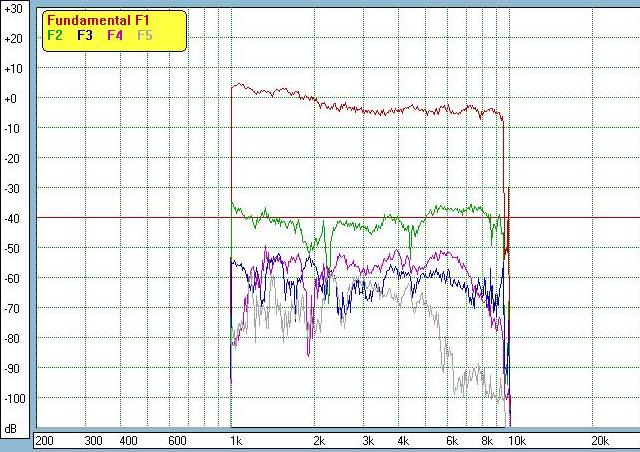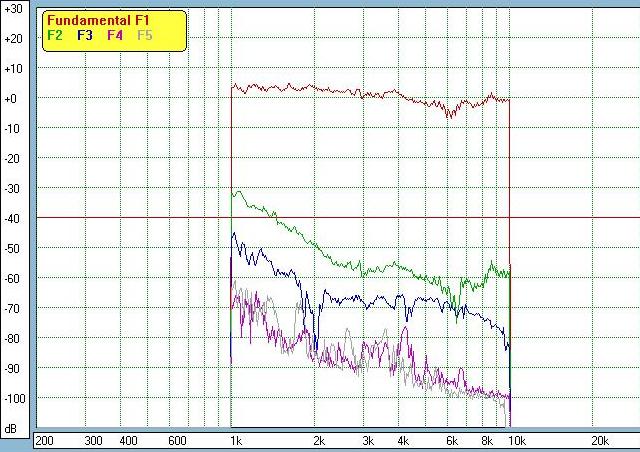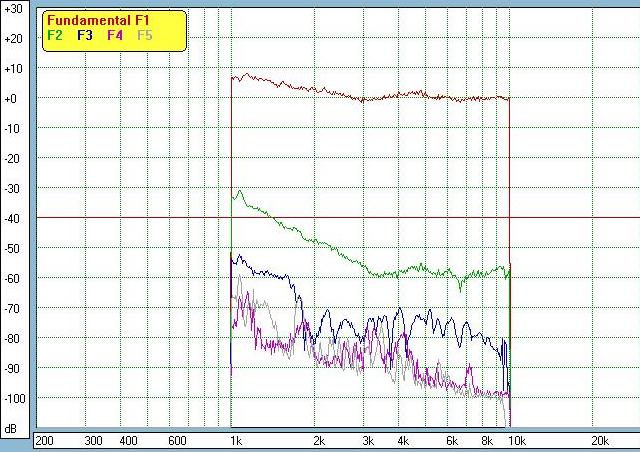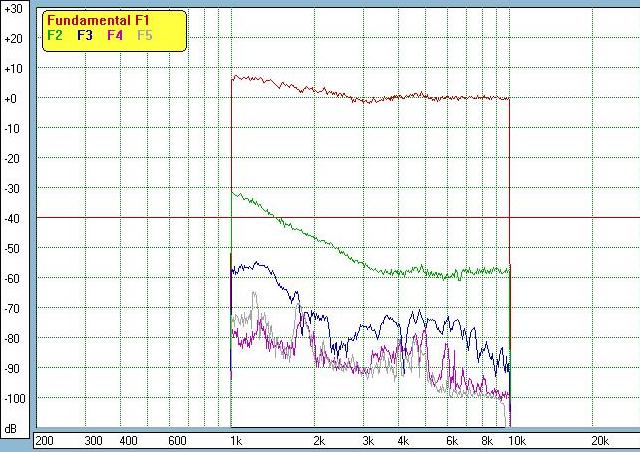
Faulty XT19 tweeter discussionIntroductionPosting this is more of an embarrassment than anything but it is also a lesson learned. I bought a pair of XT19 tweeters in 2005 for my Alpheus speaker project. Upon receiving them I noticed that the flanges were warped. I was told by other DIY'ers that this was common for that tweeter and that it will flatten out when tightened to the baffle. So I kept the tweeters and started designing the speakers. Based on gated frequency response measurements the tweeters looked okay so I decided to stick with them. However, when evaluating the crossovers I did notice an issue with one of the tweeters which would buzz when certain notes were present. I loosened up some of the screws and noticed that the buzzing went away. So I thought that I might be able to get by if I used a spacer behind one screw to allow the flange to warp slightly.I continued to work on the design trying to optimize the crossover to the best of my ability but with this being my first three way speaker design I trusted the measurements more than my ears. Despite this I always found the sound to be a bit "too detailed" and often erroneously blamed it on the metal coned midrange driver. My friend listened to the speakers a few times and always complained that the tweeter bothered him and that they sounded harsh. I should trust my friend's ears more often because he was right on the money. However, I decided to call this project complete and push them aside to work on a new project. Having liked the bass from the L22 in the Alpheus design I decided to try to smooth out the midrange by substituting in the Peerless HDS Exclusive 830881 driver for the Seas L12. I did this and made some minor crossover adjustments and initial impressions indicated that it wasn't the midrange driver that was bothering me but it was the tweeter (like my friend had suggested). Having read what a great reputation the XT19 has I thought something was up. So I decided to measure the harmonic distortion of my tweeters and suddenly the confusion cleared. XT19 distortion measurements (my pair)Using SoundEasy I measured both the left and right tweeters at a low level (around 80dB at 1m). I then loosened the screws on both tweeters to allow the warped faceplates to relax and remeasured the tweeters. Below is a plot of the distortion measurements for the left and right tweeters. If you move your mouse over the plot you can see the distortion measurement for that tweeter with the screws loosened.
Above is the distortion for the "left tweeter" which turns out to be the better tweeter of the two. You'll notice that when the screws are loosened and the tweeter is allowed to flex back into its resting warped state the measurement looks quite good. However when the screws are tightened down to pull the tweeter flush with the baffle there is quite a bit of distortion probably from the voice coil rubbing. 
Above is the distortion for the "right tweeter" which is pretty bad. This tweeter had noticeable buzzing during the tone sweeps which only improved slightly when the screws were loosened (as implied by the distortion measurement as well). CommentsI would first like to say that I don't intend for this discussion to indicate that Vifa produces poor quality components because I've had great success with every other product made by them and some of their drivers are amoung my favorites. I also don't want to put the blame on the supplier who I will leave unnamed in this document because it was my lack of patience and inexperience that was at fault. Had I known that the tweeters were faulty when I got them and not lacked the patience to wait for a replacement I probably wouldn't have had as many headaches with this design (sorry about the pun). As a result I've had an inaccurate impression of the XT19 tweeter and have shared my impressions on many of the discussion boards. I've often complained about the bottom end not being as smooth as other tweeters and it sounding a bit harsh. Well, now I know why and looking at the distortion plots above it is blatantly obvious. Now I'm starting to wonder how the Alpheus design would sound with non-faulty tweeters and if I may have been satisfied with the original L12 driver instead of the Peerless 881 replacement. I'll have to figure that out once I figure out what to do about the tweeters. I apologize for any misinformation I may have spread in the past regarding these tweeters as well as publishing a project based on the pair that I was using.Repair AttemptAfter an evening had passed and I had read a few comments regarding this issue I decided that I would try to fix the tweeters. I got a lot of great advice from the discussion board and a combination of the suggestions helped quite a bit. With the right tweeter I figured that I would listen to something my dad always says which is there is nothing worse than broken so what's the risk if you try to fix it. Also I figured a new tweeter is only $40 which isn't that bad.First I took the "right" tweeter which was the one that measured poorly regardless of how it was mounted and removed the faceplate. I examined the inside, rotated the faceplate by 120 degrees clockwise and remounted it. I then measured the unmounted tweeter and got the results shown below. 
As you can see the tweeter now measures quite good and I was pleasantly surprised that this fix worked so well. I next mounted the tweeter to the Alpheus baffle and took another measurement. This measurement wasn't quite as good and it seemed that I was getting a bit of buzzing once again but it wasn't nearly as bad as before. The next step was to take a thin piece of tweeter gasket material that I had leftover and place it between the flange of the tweeter and the baffle. This gasket is only about 1/32" thick and compresses fairly easily. After mounting the tweeter with the gasket material and the screws fully tightened I took the distortion measurement shown below. 
As you can see the tweeter measures pretty well. Please note that the mic position for this measurement may have been different than the previous measurement with the tweeter not mounted to the baffle which could explain why the results aren't a perfect match. The key thing is that this tweeter now measures fine and should sound a lot better than before. Success! Next I had to work on the "left" tweeter which was the one that measured fine as long as it wasn't tightly screwed to the baffle. I took some of the remaining tweeter gasket material that I used for the right tweeter and placed it behind the left tweeter. Once again I tightened the screws fully with the thin gasket material in place and took a distortion measurement which is shown below. 
As you can see above this tweeter now measures very well. It appears that the thin piece of gasket material had allowed the tweeter to seat comfortably and eliminated the rubbing and buzzing that I was getting before. Success again! Closing CommentsI'll start by saying that I am glad that I was able to get these tweeters to work properly for me. I still believe that I got an extreme case with this pair of tweeters because a lot of people have used them successfully without going through as much as I did to get mine to measure well. I'm glad that I was able to learn quite a bit in the process. I would like to thank John Krutke at www.zaphaudio.com for something that he posted in his blog a while back which led me to examine these tweeters in this method. He posted an example of how this type of tweeter malfunction could be seen from distortion measurements. I am also grateful that SoundEasy has the capability to perform these measurements because this type of malfunction doesn't seem to show up on gated frequency response plots or at least aren't obvious enough to be noticeable.Another thing that I learned during this process is that even if you don't have the capability to measure drivers this type of malfunction can still be diagnosed fairly easily by performing a sine sweep and listening for the harmonics. Be sure to only do a sweep in the tweeter's operating range and at a level low enough so you don't damage the tweeter. I was able to hear the buzzing at a level of around 80 dB measured at 1 meter with my SPL meter. If you are having similar issues with your tweeters you can try the approach that I took above to fix the problem but I guess you won't quite have the verification that the distortion measurements provide. Hopefully this is all that I will be writing about this pair of tweeters but I have yet to listen to them so hopefully all goes well. I'll have to update my Alpheus project review when I get them back together as well. Now I'll finally get to hear what the XT19 tweeters are truly capable of. |
